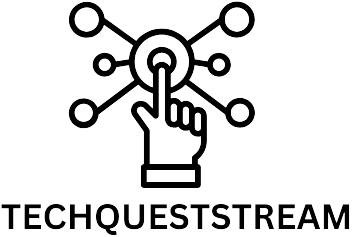In today’s fast-paced world, technology evolves faster than a cat can knock over a glass of water. With innovations popping up like daisies in spring, it’s crucial to categorize these technologies effectively. By labeling them as base, key, pacing, or emerging, organizations can navigate the tech landscape with the finesse of a tightrope walker juggling flaming torches.
This classification isn’t just a fancy game of tech bingo; it’s a strategic effort to prioritize investments and drive innovation. Understanding where each technology stands helps businesses focus on what truly matters, ensuring they don’t miss the next big wave while chasing after yesterday’s trends. So buckle up as we dive into the world of tech categorization and discover how it can supercharge growth and keep companies ahead of the curve.
Table of Contents
ToggleOverview of Technology Classification
Categorizing technologies into base, key, pacing, and emerging provides a framework for organizations to evaluate their tech landscape. Base technologies serve as the foundation, offering essential capabilities that support core operations. Key technologies drive critical improvements, enhancing efficiency and effectiveness in various functions.
Pacing technologies represent advancements that organizations adopt to keep pace with industry changes. These innovations often dictate competitive advantage, making them vital for staying relevant. Emerging technologies hold the potential to transform entire industries. They can create new markets or disrupt existing ones, making early identification crucial.
Each category addresses different strategic needs. Organizations prioritize investments according to these categories, ensuring resources align with innovation objectives. Prioritization enables businesses to focus on technologies that yield the highest returns while mitigating risks related to obsolete trends.
The classification framework supports informed decision-making. Leaders identify which technologies merit immediate attention and which can remain on the backburner. Recognizing the current and potential impact of each technology allows organizations to strategically allocate budgets, training, and development efforts.
This categorization not only streamlines resource allocation but also enhances long-term planning. By understanding where each technology stands, companies can forecast future trends and adapt strategies accordingly. Organizing technologies into defined categories equips businesses to respond proactively in a dynamic tech environment.
Base Technologies

Base technologies form the foundation for essential operations in various industries. They facilitate core functions that businesses rely on daily.
Definition and Characteristics
Base technologies encompass the fundamental tools and systems that companies utilize for smooth operation. They provide necessary capabilities without which business processes would falter. Common characteristics include stability, widespread adoption, and low risk. These technologies often focus on efficiency and reliability. Organizations recognize their critical role in maintaining uninterrupted service and ensuring consistency in outputs.
Examples of Base Technologies
Examples of base technologies include established software platforms, database management systems, and communication tools. Email systems serve as a primary communication method, supporting collaboration across departments. Enterprise Resource Planning (ERP) systems integrate multiple business processes, streamlining operations. Additionally, foundational hardware, like servers and networking equipment, underpins IT infrastructure. Companies invest in these technologies to secure daily operations and enhance overall productivity.
Key Technologies
Key technologies serve as critical drivers of innovation within industries. They enhance efficiency, improve processes, and create competitive advantages.
Importance in Industry
Key technologies play a vital role in defining industry standards. By adopting these innovations, organizations can achieve significant performance improvements. Businesses expect to see increased productivity from these technologies, which often lead to enhanced customer satisfaction and loyalty. Companies that engage with key technologies position themselves as leaders in their field, ensuring they remain relevant in an ever-evolving market. Strategic investment in these technologies aligns resources with business objectives, ultimately contributing to sustained success.
Case Studies of Key Technologies
Numerous industries illustrate the impact of key technologies. In healthcare, telemedicine platforms have transformed patient access to care, significantly affecting treatment outcomes. The financial sector leverages blockchain technology to enhance security and transparency in transactions. Automotive companies increasingly adopt advanced driver-assistance systems to improve road safety, reflecting a pivotal shift in consumer expectations. Retail businesses utilize data analytics to refine inventory management and customer targeting strategies, driving operational efficiency. These case studies highlight how investing in key technologies can result in measurable benefits, reinforcing their importance across diverse sectors.
Pacing Technologies
Pacing technologies play a vital role in helping organizations maintain a competitive edge. These advancements reflect current industry trends and are necessary for aligning with evolving market demands.
Identifying Pacing Technologies
Identifying pacing technologies requires an understanding of both trends and future industry directions. Companies assess their competitive landscape to pinpoint technologies that are crucial for staying relevant. For example, advancements in artificial intelligence and machine learning serve as key indicators of pacing technologies. Evaluating competitor strategies also aids in identifying the technologies that can drive innovation and differentiation. Organizations gain insights by researching successful implementations within their industries. Continuous monitoring of technological shifts ensures that businesses remain informed about emerging capabilities that could influence their market position.
Impact on Business Strategy
Pacing technologies significantly influence business strategy formulation and execution. Utilizing advancements effectively helps organizations align their goals with emerging industry standards. Investing in these technologies can enhance operational efficiency and improve customer experiences. By integrating pacing technologies into strategic planning, businesses can adapt rapidly to changing market conditions. This proactive approach supports better decision-making and resource allocation, ensuring sustainable growth. Companies that prioritize pacing technologies set themselves up for innovation leadership and greater market presence. Emphasizing these technologies positions organizations to respond promptly to competitive challenges and capitalize on new opportunities.
Emerging Technologies
Emerging technologies hold the potential to reshape industries and create new markets. Recognizing these innovations early enables organizations to capitalize on fresh opportunities and stay ahead in competitive landscapes.
Trends and Predictions
Tracking trends ensures alignment with future technological advancements. Innovations like artificial intelligence, quantum computing, and the Internet of Things continue to gain prevalence. Growth projections indicate that the AI market could reach $190 billion by 2025. As these technologies develop, organizations gain the capacity to enhance operational efficiency and improve customer engagement significantly. Analysts suggest that companies that adopt emerging technologies early can generate substantial competitive advantages.
Evaluating Potential Risks and Rewards
Balancing potential risks and rewards is crucial when exploring emerging technologies. Risks can include high costs of implementation and the uncertainty surrounding market acceptance. Companies must consider resource allocation and potential disruptions to existing operations. At the same time, leveraging emerging technologies may yield substantial rewards, such as increased market share and enhanced innovation capabilities. Evaluating these factors allows organizations to make informed decisions about investments in emerging technologies, ensuring a well-rounded strategic approach.
Categorizing technologies as base, key, pacing, or emerging is an effort to enhance strategic decision-making in a rapidly evolving landscape. This framework empowers organizations to prioritize their investments effectively and align resources with innovation goals. By understanding the distinct roles of each category, businesses can streamline operations and focus on technologies that drive growth and competitiveness.
As industries continue to transform, leveraging this classification will enable companies to navigate challenges and seize opportunities. The proactive identification and management of these technologies will ultimately position organizations for sustained success in a dynamic marketplace.





